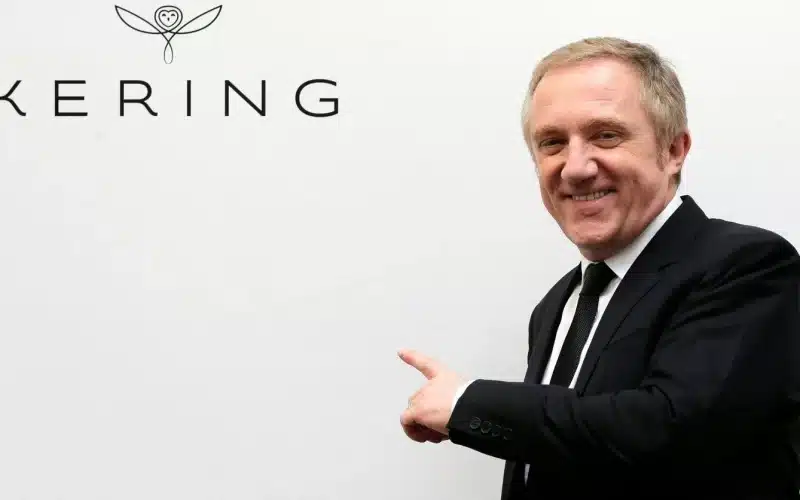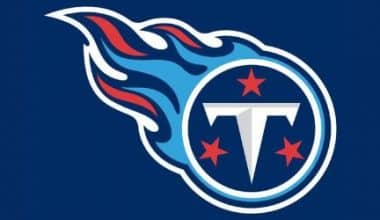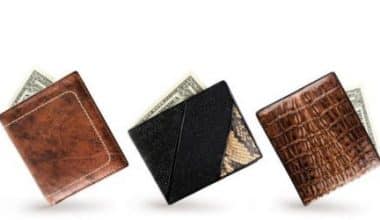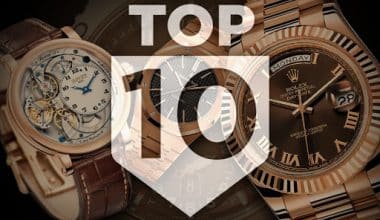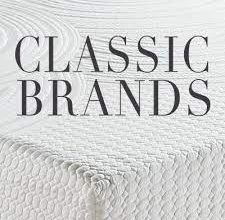Who Owns Gucci? Gucci is owned by a French holding company, Kering, which acquired an 8.8 billion dollar stake in the renowned Italian fashion house in 2004. Artémis, the investment company of the Pinault family led by Francois Pinault, is Kering’s largest shareholder and holds most of the company’s stock through its parent company. Gucci is one of the most profitable brands within the Kering Group; it generated over €10.5 billion (approximately $12.7 billion) in revenue in 2022, compared to the Group’s total revenue of €20 billion (roughly $21 billion).
However, beyond the question, “Who owns Gucci?” let’s go over the backstory of the brand and how it has fared over the years.
Who Owns Gucci? Backstory
The Gucci family claims its origins date back to 1410 in the merchant city of Florence. Guccio Giovanbattista Giacinto Dario Maria Gucci (1881-1953) moved from Florence to Paris to London, where he worked at the opulent Savoy Hotel. As a bellhop, he would load and unload the luggage of the hotel’s wealthy clients, learning about their fashion, quality, fabrics, and travel conditions. He later spent four years working for the Compagnie des Wagons-Lits, a European rail company specializing in upscale travel leisure, expanding his knowledge of luxurious travel lifestyles. Following World War I, he worked for the fine luggage manufacturer Franzi.
Guccio Gucci opened his shop, Azienda Individuale Guccio Gucci, on Via della Vigna Nuova in Florence in 1921, selling imported leather luggage. He also opened a small workshop where he could have his leather goods made by local artisans. A more extensive workshop was eventually required to house Gucci’s sixty artisans. Mussolini’s invasion of Ethiopia in 1935 prompted the League of Nations to impose a trade embargo on Italy. Leather became scarce, forcing Guccio Gucci to incorporate other fabrics into the product’s composition, such as raffia, wicker, wood, linen, and jute. Gucci’s signature rhombi motif was created. The Guccis invented a new tanning technique that resulted in “cuoio grasso,” which became a Gucci trademark. Gucci introduced its handbags in 1937.
Read Also: Bernard Arnault’s Net Worth 2023: Does He Own Gucci?
Guccio’s wife and children were all employed at the shop. Aldo, Guccio’s son, became increasingly involved in the family business after starting work there in 1925. In 1938, he persuaded his father to expand by opening a new shop in Rome (21 Via Condotti) and introducing more Gucci accessories (gloves, belts, wallets, keychains). Gucci artisans worked on making boots for the Italian infantry during WWII.
Due to material shortages, the company produced cotton canvas handbags rather than leather during WWII. However, the canvasser’s hand was distinguished by a signature double-G symbol and prominent red and green bands. The Gucci crest, which depicted a shield and armored knight surrounded by a ribbon inscribed with the family name, became synonymous with Florence after the war.
Post-War Dolce Vita
After the war, Guccio Gucci distributed the shares to his three sons (Aldo, Vasco, and Rodolfo). Gucci introduced the Bamboo bag in 1947.
Quality is remembered long after price is forgotten, was the brand’s first global tagline. In 1952, Gucci introduced the iconic moccasins (Gucci loafer). Guccio Gucci died in Milan on January 2, 1953. Gucci opened its first US store on 5th Avenue and 58th Street in New York in November 1953. A second New York store opened in the Saint Regis Hotel in 1960, and a third on 5th Avenue and 54th Street in 1973, prompting locals to refer to this area as “Gucci City.”
Gucci introduced the Jackie Bag and opened stores in London and Palm Beach in 1961. Gucci opened its first French store near Place Vendôme in Paris in March 1963. In 1964, the double-G logo was introduced for belt buckles and other accessory decorations. Rodolfo Gucci and Vittorio Accornero created the Flora scarf in 1966 for Grace Kelly, Princess of Monaco, who frequently bought Gucci items.
Read Also: Does GUCCI Have a BLACK FRIDAY SALE: All You Need To Know
Gucci opened a store at 347 Rodeo Drive in October 1968, inspiring many Hollywood stars to endorse the brand. With the opening of Rodeo Drive came the debut of Gucci’s first dresses. Gucci’s success in the United States paved the way for its global expansion in Asia (Tokyo opened in 1972, Hong Kong in 1974) and the Middle East. Aldo’s son Roberto piloted the first Gucci franchised store in Brussels. Gucci had ten stores in the United States by 1969. That year, 84,000 Gucci moccasins were sold in the United States alone. Aldo Gucci was dubbed the “first Italian ambassador to the United States” by US President John F. Kennedy.
Gucci released a Rolls-Royce luggage set in 1970 and collaborated with American Motors Corporation (AMC) to create the Gucci Hornet, sold during the 1971, 1972, and 1973 model years. The Gucci Sportabout wagon was one of the first American vehicles to feature a luxury trim package a well-known fashion designer designed. Gucci introduced Gucci Perfumes (Il Mio Profumo) and its first watch (Model 2000) in 1972, its first franchised store in the United States in 1973, and the Gucci Galleria in its Beverly Hills store in 1977, a private art gallery adjoined to the store and reserved for premium clients with a golden key. A Miami-based coachbuilder marketed a Gucci edition of the Cadillac Seville sedan from 1978 to 1984 (the 1978 model is on display at the Gucci Museum).
The Gucci loafer was added to the permanent collection of the New York Moma in 1985.
Gucci’s Family Feud in the 1980s
Giorgio, Aldo’s son, sparked the first family feud in 1969 by launching Gucci Boutique on his own, which was eventually absorbed by the family group in 1972.
During the 1980s, the Gucci saga eroded the company’s family-held top management and fed press headlines. Paolo Gucci, Aldo’s son, attempted to launch the Gucci Plus brand independently. Aldo was chastised for developing the majority of Gucci America’s international business. The Gucci group was consolidated to ease family tensions and became a publicly traded company, Guccio Gucci SpA, in 1982. Rodolfo died in 1983. His son Maurizio Gucci inherited his father’s majority stake in the company.
He launched a legal battle against his uncle Aldo for complete control of Gucci (a prosecution led by city prosecutor Rudolph Giuliani and represented by Domenico de Sole for the Gucci family). Maurizio Gucci took over as CEO of the company. In 1986, with only 16.7% of Gucci remaining in his possession, Aldo Gucci, 81, was sentenced to a year for tax evasion (in a jail where Albert Nipon was also an inmate). The Gucci Galleria’s artwork was liquidated. In 1988, Maurizio Gucci sold nearly 47.8% of Gucci to the Bahrain-based investment fund Investcorp (which had owned Tiffany since 1984), keeping the remaining 50%.
Despite the family feuds, sales of trademarked Gucci products reached $400 million between 1981 and 1987, with $227 million in 1990 alone. The 1980s saw the mass production of Gucci products, which generated revenue but harmed Gucci’s position as an exclusive luxury brand. Maurizio Gucci hired Dawn Mello to get Gucci back on track.
Read Also: Gucci Logo: What It Symbolizes, Evolution & History
Gucci’s finances were still in the red from 1991 to 1993. Maurizio Gucci was blamed for lavish spending on the company’s headquarters in Florence (Via delle Caldaie palazzo) and Milan. In 1993, Investcorp purchased the remaining 50% of Guccio Gucci S.p.A. from Maurizio Gucci, effectively ending the family’s involvement. Maurizio Gucci was assassinated in the lobby of Gucci’s Milan office in March 1995. His ex-wife, Patrizia Reggiani, was sentenced to 16 years in prison for hiring a hitman to murder him.
Porno Chic Revival
Dawn Mello was hired as Gucci’s executive vice president and chief designer in November 1989. To reestablish the brand’s exclusivity, she reduced the number of stores from over 1,000 to 180. Also, she reduced Gucci’s sales from 22,000 to 7,000 items. She brought back the Bamboo bag and the Gucci loafer. She relocated Gucci’s headquarters from Milan to Florence, where the company’s history is deeply rooted.
Dawn Mello hired Tom Ford to oversee the women’s ready-to-wear collection. Tom Ford was appointed creative director of Gucci in 1994. Ford and Mello went back to the brand’s archives from the 1970s. Ford’s 1995 collection, which featured sensual white gowns with provocative cut-outs, was an instant success. Gucci, resurrected by Tom Ford’s hot-bod hedonism, also launched provocative limited edition products such as silver handcuffs, a G-string, and provocative ad campaigns such as the G logo shaved on pubic hair.
Gucci Dress
Domenico De Sole, Gucci’s legal adviser since the 1980s and CEO since 1994, campaigned for Gucci’s Italian leather manufacturers to continue working together and developed a partners’ program to strengthen their ties. He examined each product’s pricing and gradually increased Gucci’s advertising budget from $6 million in 1993 to $70 million in 1997. The company was publicly indexed on the New York Stock Exchange in October 1995, with an initial stock value of US$22. Then, between 1995 and 1997, Investcorp sold its stake in Gucci for approximately US$1.9 billion.
Who Owns Gucci? LVMH-PPR feud over Gucci
By January 1999, the French luxury conglomerate LVMH, quietly buying Gucci shares in 1995, had acquired 34% of Gucci Group NV. Seeking an escape route from LVMH, Tom Ford and Domenico De Sole turned to French financier François Pinault and his Group Pinault Printemps Redoute, which later became Kering. In March, Pinault’s Group purchased 40% of Gucci for $75 per share, reducing LVMH’s stake to 20.7% through dilution. PPR also purchased Yves Saint Laurent from Sanofi and resold it to the Gucci Group for the same price.
This fashion coup d’état sparked a cold war between LVMH and the new Gucci-PPR coalition. Gucci purchased 51% of Alexander McQueen’s couture house in December 2000, causing a schism because McQueen was also the creative director of LVMH’s Givenchy. The Gucci feud ended in September 2001 when all parties reached an agreement. Tom Ford and Domenico De Sole announced at the end of 2003 that they would not renew their contract with Gucci-PPR, which expired in April 2004.
Following Ford’s departure, Gucci Group retained three designers to maintain the success of the company’s flagship label: John Ray, Alessandra Facchinetti, and Frida Giannini, who had all worked under Ford’s creative direction. Facchinetti was promoted to Creative Director of Women’s Wear in 2004 and worked for two seasons before leaving. Ray was the Menswear Creative Director for three years.
Read Also: Who Owns Chanel Now? What We Know About the Wertheimer Family
Frida Giannini was appointed creative director of Gucci in 2006. She had been a Gucci handbag designer since 2002, head of accessories since 2004, and creative director of women’s ready-to-wear and accessories since 2005. In 2008, Patrizio di Marco, formerly of Bottega Veneta, was appointed CEO of Gucci. Frida Giannini, both praised and chastised for constantly revisiting Tom Ford’s archives, eventually toned down Ford’s explosive ‘Porno Chic’ props over the years “from sexy to sensual” and began to experiment with ‘androgynous Bohemian’ styles with a 19th-century reminiscence. She also created “neo-classics” like New Bamboo and Jackie handbags. With fewer styles and more midrange products, Patrizio di Marco focused on the post-2008 crisis.
In 2010, Gucci announced a collaboration with Christie’s to create a larger repository of the brand’s archives and to provide authenticity certification services. To commemorate its 90th anniversary, Gucci opened the Gucci Museo in Florence in 2011. Two hundred twenty new Gucci stores opened between 2010 and 2015, bringing the total store count to 500.
Does Guccio Gucci’s family still own Gucci?
No, the Gucci family no longer has a stake in the company after Maurizio sold it to Investcorp in 1993; Kering (who owns 99% of the company) now owns and runs it.
Who Owns Gucci now?
Marco Bizzarri, Gucci’s current president and CEO, was appointed in January 2015. Before joining Gucci, he was the CEO of Bottega Veneta and previously led Kering’s luxury couture and leather goods group. He succeeded Patrizio Di Marco, who stepped down as CEO after a challenging year when sales fell while competitors thrived.
When he first joined the company, Bizzarri made a crucial decision: he appointed Alessandro Michele as Gucci’s new creative director. During his leadership, Gucci became one of the most talked-about companies in luxury apparel. His bold designs and use of color helped Gucci reclaim its place on the global stage.
Profits have gradually increased each year since then, thanks to organic growth and significant marketing efforts, such as its current tenure with Harry Styles as a campaign model. During the last few years, Gucci has established itself as one of today’s most important fashion labels under Marco Bizzarri’s leadership.
According to WWD, Alessandro Michele has recently ended his work with the company due to competing visions for the brand’s development, resulting in a schism between himself and Bizzarri.
What is the value of the Gucci brand?
Gucci’s sales reached 8 billion euros in 2018, setting a new record for the company. This success can be ascribed largely to their strategic push into younger markets; 65% of their sales were geared toward customers aged 18-34.
In July 2020, it was worth roughly $11.36 billion (€10.78 billion).
The Gucci brand was expected to be worth $18.1 billion in 2022, a considerable increase from its net value of a little over $11.55 billion (€10.96 billion) in October 2018. This astonishing success has been attributed to various factors, including the label’s rising appeal among millennials and Gen Zers alike, its significance in luxury and streetwear culture, and collaborations with big-name celebrities such as 2 Chainz, Lady Gaga, and others.
Who Owns Gucci: Conclusion
Since its start in Florence in 1921, the Gucci brand has come a long way. It has progressed from producing special travel items and equestrian equipment to being one of the most successful global luxury companies with global awareness. Their products, which range from ready-to-wear clothing to handbags and home décor, are sold worldwide. Gucci, which is owned by Kering, is an iconic fashion business whose influence extends far beyond Italy’s borders and will do so for many years to come.
Who Owns Gucci: Related Articles
- MARKETING AND ADVERTISING: Differences Between Marketing & Advertising
- The Most Valuable Fashion Brand In The World
- Most Valuable Fashion Brand [3 lessons to learn]
